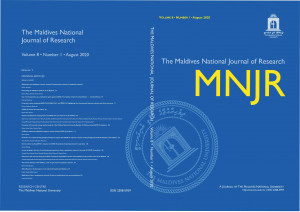Designing Learning Spaces for Effective Learning
DOI:
https://doi.org/10.62338/y1ytfc72Keywords:
Development Processes, Learning Spaces, Universiti Sains Islam Malaysia, Ubiquitous LearningAbstract
The connections between the design and use of space in higher education, and the production of teaching and learning, and of research, are not well understood. This study reports the developmental steps prior building the learning spaces in Universiti Sains Islam Malaysia (USIM). Space issues in higher education have usually been considered either in the context of space planning (the aim of which is to provide appropriate amounts of space for defined uses, and to maximise its use once provided) or as part of campus planning and building design. The findings report the level of design effectiveness of the learning spaces in USIM. The recommendation from learning space users to be utilised on the design improvement for the next learning spaces in USIM will be reported in this study
References
Clark, H. 2002. Building education: The role of the physical environment in enhancing teaching and research. London: Institute of Education, University of London.
Cox, A. M. (2011). Students’ experience of university space: An exploratory study. International Journal of Teaching and Learning in Higher Education, 23(2), 197-207.
Edwards, L., & Torcellini, P. (2002). Literature Review of the Effects of Natural Light on Building Occupants (No. NREL/TP-550-30769). National Renewable Energy Lab., Golden, CO.(US).
Harvey, E. J. & Kenyon, M. C. (2013). Classroom seating considerations for 21st century students and faculty. Journal of Learning Spaces, 2(1).
Henshaw, R. G., Edwards, P. M., & Bagley, E. J. (2011). Use of swivel desks and aisle space to promote interaction in mid-sized college classrooms. Journal of Learning Spaces, 1(1).
Henshaw, R. G. & Reubens, A. (2014). Evaluating design enhancements to the tablet arm chair in language instruction classes at UNC Chapel Hill. Journal of Learning Spaces, 2(2).
Higher Education Funding Council for England. 2000. Strategic planning in higher education: A guide for heads of institutions, senior managers and members of governing bodies (00/24). Bristol, UK: HEFCE.
Knobloch, N. A. (2003). Is experiential learning authentic? Journal of Agricultural Education, 44(4), 22-34.
Light, G., and R. Cox. 2001. Learning and teaching in higher education: The reflective professional. London: SAGE PublicationsMayer, R. E. (2002). Rote versus meaningful learning. Theory into practice, 41(4), 226-232.
McArthur, J. A. (2015). Matching instructors and spaces of learning: The impact of space on behavioral, affective and cognitive learning. Journal of Learning Spaces, 4(1), 1-16.
Rands, M. L. & Gansemer-Topf, A. M. (2017). The room itself is active: How classroom design impacts student engagement. Journal of Learning Spaces, 6(1), 26-33.
Tessmer, M. (2013). Planning and conducting formative evaluations. Routledge.Unge, J., Lundh, P., Gummesson, C., & Amnér, G. (2018). Learning spaces for health sciences–what is the role of e-learning in physiotherapy and occupational therapy education? A literature review. Physical Therapy Reviews, 1-11



